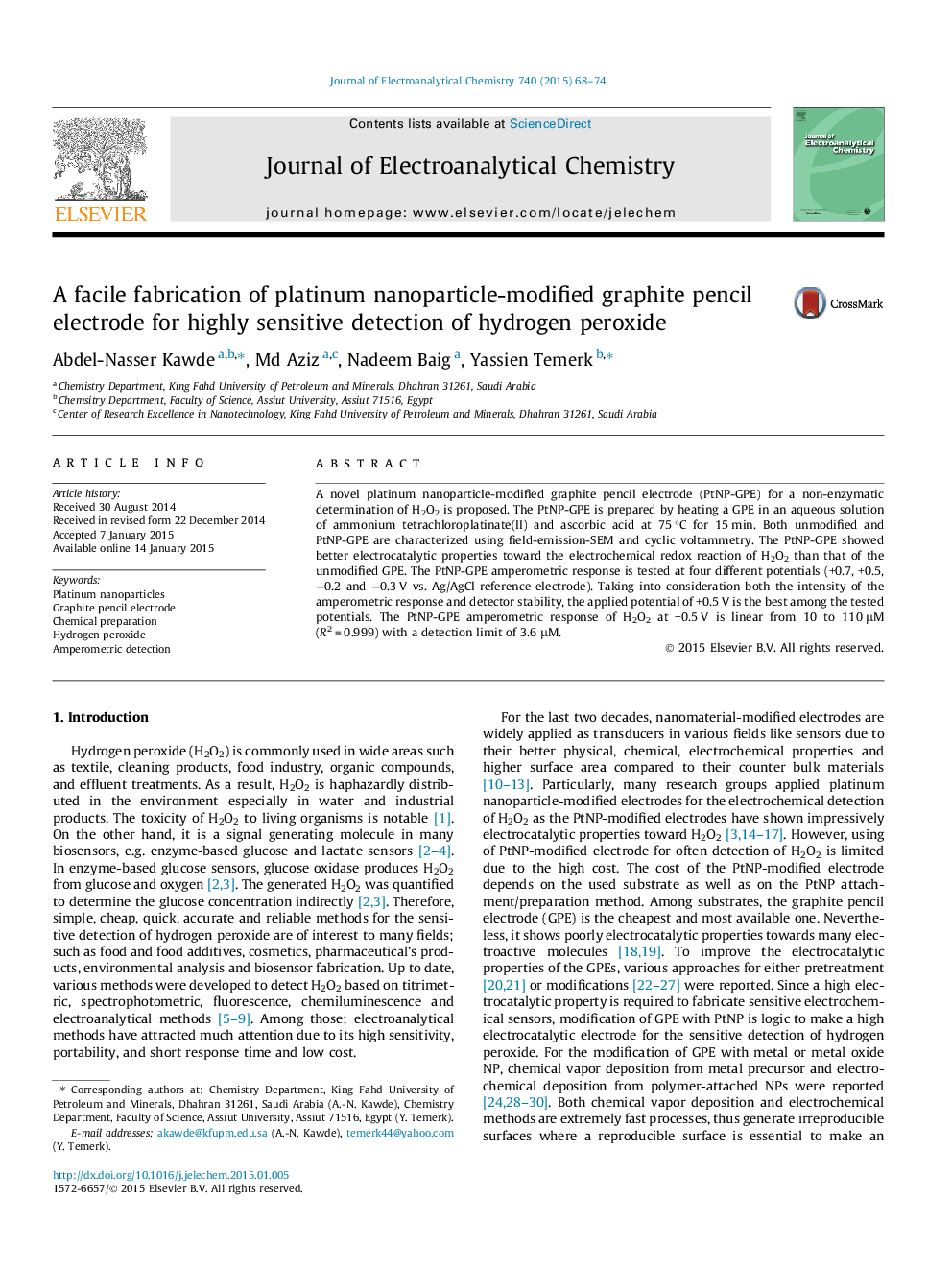| Article ID | Journal | Published Year | Pages | File Type |
|---|---|---|---|---|
| 218444 | Journal of Electroanalytical Chemistry | 2015 | 7 Pages |
•We developed a simple chemical method for the fabrication of PtNP-GPE.•We tested the fabricated PtNP-GPE for the detection of hydrogen peroxide.•We obtained all figures of merit for the developed PtNP-GPE.•We tested the effect of potential interferences on the PtNP-GPE response.
A novel platinum nanoparticle-modified graphite pencil electrode (PtNP-GPE) for a non-enzymatic determination of H2O2 is proposed. The PtNP-GPE is prepared by heating a GPE in an aqueous solution of ammonium tetrachloroplatinate(II) and ascorbic acid at 75 °C for 15 min. Both unmodified and PtNP-GPE are characterized using field-emission-SEM and cyclic voltammetry. The PtNP-GPE showed better electrocatalytic properties toward the electrochemical redox reaction of H2O2 than that of the unmodified GPE. The PtNP-GPE amperometric response is tested at four different potentials (+0.7, +0.5, −0.2 and −0.3 V vs. Ag/AgCl reference electrode). Taking into consideration both the intensity of the amperometric response and detector stability, the applied potential of +0.5 V is the best among the tested potentials. The PtNP-GPE amperometric response of H2O2 at +0.5 V is linear from 10 to 110 μM (R2 = 0.999) with a detection limit of 3.6 μM.
Graphical abstractFigure optionsDownload full-size imageDownload as PowerPoint slide
